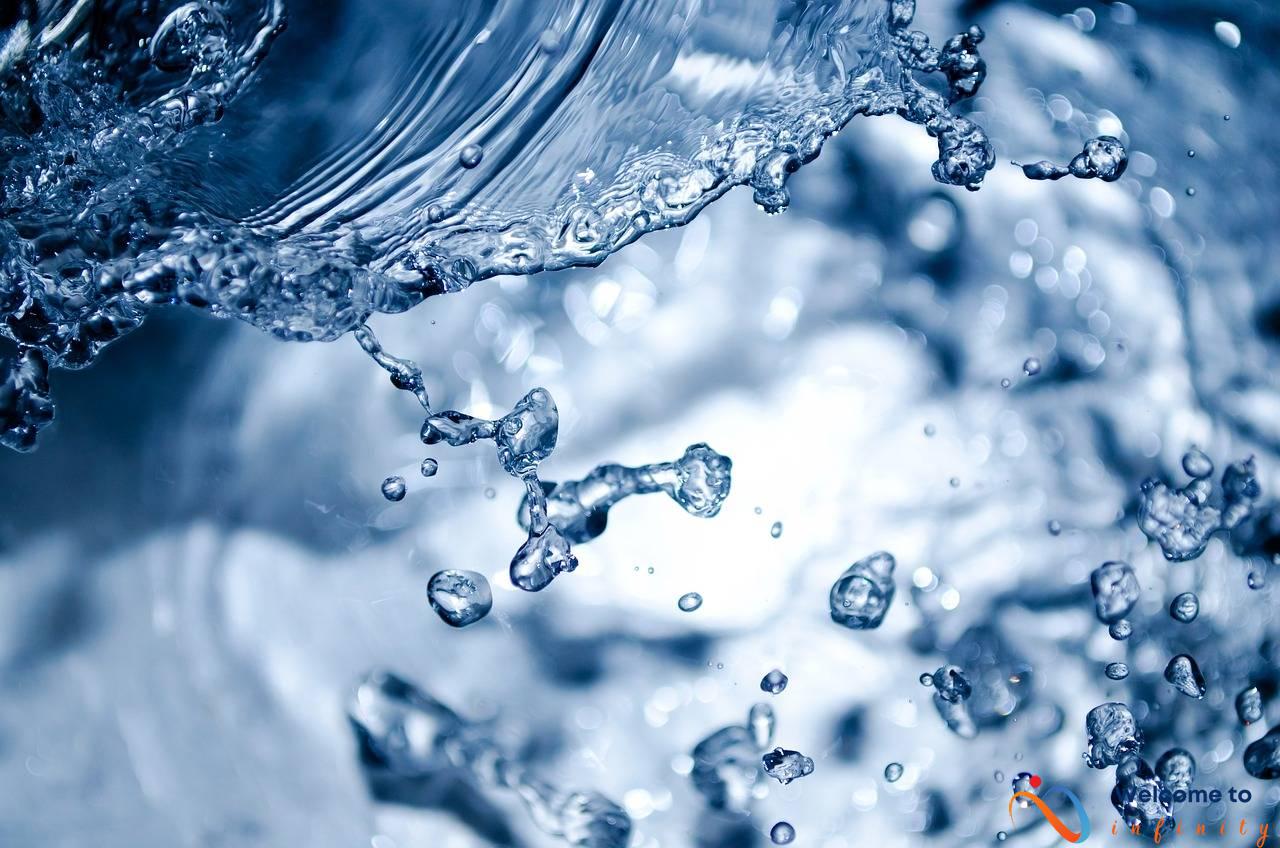As we age, our skin may begin to develop age spots or hyperpigmentation. These dark spots may be caused by many factors, including sun exposure and hormonal changes. Fortunately, there are several ways to prevent and treat age spots and hyperpigmentation through a consistent skincare routine.
The first step in preventing age spots and hyperpigmentation is to protect your skin from the sun. It is essential to wear a broad-spectrum sunscreen with an SPF of at least 30 every day, even on cloudy days. Sun damage is one of the leading causes of age spots and hyperpigmentation, so it is essential to use sunscreen as a preventative measure. In addition to wearing sunscreen, it is also helpful to wear protective clothing, such as hats and long-sleeved shirts.
Another way to prevent age spots and hyperpigmentation is to exfoliate your skin regularly. Exfoliating helps to remove dead skin cells and promotes cell turnover, which can prevent the buildup of pigmented cells. You can use an exfoliating scrub or a chemical exfoliant like an alpha-hydroxy acid (AHA) or beta-hydroxy acid (BHA) to gently remove dead skin cells.
Using products with antioxidants like Vitamin C and retinoids can also help to prevent age spots and hyperpigmentation. These antioxidants can help to brighten and even out skin tone, making them effective in preventing age spots and hyperpigmentation. Vitamin C can also help to protect against sun damage, while retinoids promote cell turnover and collagen production.
In conclusion, preventing age spots and hyperpigmentation requires a consistent skincare routine that includes protecting your skin from the sun, exfoliating regularly, and using products with antioxidants. By taking these preventative measures, you can maintain healthy and even skin tone and prevent age spots and hyperpigmentation.
Understanding Age Spots and Hyperpigmentation
Age spots and hyperpigmentation can be a common concern for many people and can negatively impact the appearance of the skin. These dark spots on the skin are caused by an increase in melanin production, which can be attributed to sun exposure. Exposure to UV rays stimulates melanin production in the skin, leading to the formation of age spots and hyperpigmentation.
Age spots and hyperpigmentation can often appear on areas of the skin that are frequently exposed to the sun, such as the face, hands, and neck. While they are usually harmless, many people may feel self-conscious about their appearance. This is why it's important to understand how they form and how to prevent them.
By taking care of your skin through consistent skincare practices and sun protection, you can prevent these dark spots from forming or getting worse. In addition to sunscreen usage, exfoliating regularly and using products containing antioxidants like vitamin C and retinoids can also be beneficial. If age spots and hyperpigmentation have already formed, professional treatments like chemical peels, laser therapy, or topical prescription creams may be required to treat them.
Preventative Measures
To prevent age spots and hyperpigmentation, incorporating a few key steps into your daily skincare routine can be helpful. First and foremost, wearing sunscreen daily is crucial for preventing sun damage, which is a leading cause of age spots and hyperpigmentation. Be sure to choose a broad-spectrum sunscreen with an SPF of at least 30 and reapply every two hours if you're outside.
Exfoliating regularly can also be beneficial for preventing age spots and hyperpigmentation. This can help remove dead skin cells that can contribute to these skin issues. However, be sure not to over-exfoliate, as this can lead to further skin damage. Aim to exfoliate twice a week with a gentle scrub or exfoliating acid.
Using products that contain ingredients such as vitamin C and retinoids can also help prevent age spots and hyperpigmentation. Vitamin C is a powerful antioxidant that can brighten and even out skin tone, while retinoids can help promote cell turnover and improve the appearance of fine lines and wrinkles. Look for serums or moisturizers that contain these ingredients and incorporate them into your skincare routine regularly.
- Wear sunscreen daily with SPF 30 or higher
- Exfoliate twice a week with a gentle scrub or exfoliating acid
- Use products containing vitamin C and retinoids regularly to brighten and even out skin tone
Wearing Sunscreen Daily
Sun protection is essential in preventing age spots and hyperpigmentation. The sun's UV rays can cause visible damage to the skin, leading to dark spots and uneven skin tone. Wearing a broad-spectrum sunscreen with an SPF of at least 30 is crucial to protect the skin from sun damage. But not all sunscreens are created equal.
When choosing a sunscreen, it is important to look for broad-spectrum protection, which means that it protects against both UVA and UVB rays. It is also recommended to choose a sunscreen that is water-resistant, especially if you sweat or plan on spending time in the water. Additionally, consider the texture of the sunscreen, as some may feel too greasy or heavy on the skin.
Avoiding sun exposure during peak hours, such as between 10 am and 4 pm, can also help prevent sun damage. If you are going to be outside, seek shade or wear protective clothing, such as hats and long-sleeved shirts. It is important to apply sunscreen generously and frequently, at least every 2 hours, and more often if you are sweating or swimming.
By consistently wearing sunscreen daily and taking other sun protection measures, you can help prevent the formation of age spots and hyperpigmentation caused by sun damage. Incorporating sunscreen into your daily skincare routine can have long-term benefits for the health and appearance of your skin.
Regular Exfoliation
Regular exfoliation is an important step to prevent age spots and hyperpigmentation. Exfoliating can help remove dead skin cells that can clog pores and contribute to the formation of age spots. Dead skin cells can also make skin look dull and contribute to uneven skin tone. By removing dead skin cells, exfoliation can also allow skincare products to penetrate more effectively, increasing their effectiveness.
- Physical exfoliants, such as scrubs or cleansing brushes, can be used once or twice a week to help remove dead skin cells from the surface of the skin.
- Chemical exfoliants, such as alpha-hydroxy acids (AHAs) or beta-hydroxy acids (BHAs), can be used to dissolve the bonds between dead skin cells and promote their removal.
- Be sure not to over-exfoliate, as this can lead to skin irritation and sensitivity. Stick to the recommended frequency and duration for the exfoliant you are using.
By incorporating regular exfoliation into your skincare routine, you can remove dead skin cells and prevent the formation of age spots and hyperpigmentation, while also improving the overall appearance and health of your skin.
Using Products with Vitamin C and Retinoids
Vitamin C and retinoids are essential components in preventing age spots and hyperpigmentation as they work as antioxidants, providing a bright and even skin tone. These ingredients can be found in various skincare products, including serums, moisturizers, and even facial oils.
Vitamin C is a potent antioxidant that helps reduce the appearance of age spots and hyperpigmentation by reducing the production of melanin in the skin. It also boosts collagen production and can help protect the skin from damaging free radicals caused by the sun and pollution.
Retinoids, on the other hand, work by increasing cell turnover, helping to remove dead skin cells and reduce the appearance of age spots and hyperpigmentation. They also encourage collagen production and help reduce fine lines and wrinkles.
When using products containing vitamin C and retinoids, it is essential to start slow and gradually increase usage to avoid skin irritation and sensitivity. It is also advisable to use sun protection when using retinoids and vitamin C as they can make the skin more sensitive to the sun.
Incorporating skincare products with vitamin C and retinoids into your regular routine can help prevent the formation of age spots and hyperpigmentation by providing antioxidants to the skin. With consistent use, your skin can achieve a brighter, even tone.
Treatment Options
If age spots and hyperpigmentation have already formed on the skin, several treatment options are available. One option is chemical peels, which involve using a solution to remove the outer layers of skin, promoting the growth of new, healthy cells. Chemical peels can help reduce the appearance of age spots and hyperpigmentation and improve overall skin texture.
Another treatment option is laser therapy, which can target the pigmented areas of the skin, breaking up the excess melanin and promoting collagen production. Laser therapy is a relatively painless procedure that can be performed in a dermatologist's office, and it often requires minimal downtime.
Topical prescription creams, such as hydroquinone, can also be effective in lightening age spots and hyperpigmentation when used as directed by a dermatologist. These creams work by blocking melanin production in the skin and are available in a range of strengths to target different types of pigmentation.
In addition to these treatments, it is essential to continue practicing preventative measures to keep age spots and hyperpigmentation at bay. Your skincare routine should include regular use of sunscreen, exfoliation, and products containing vitamin C and retinoids. Proactive skincare is key to maintaining healthy and even skin tone and preventing future hyperpigmentation.
Chemical Peels
Chemical peels are a popular treatment for age spots and hyperpigmentation. This procedure involves applying a chemical solution to the skin, which causes the top layer of skin to peel off. The new skin underneath is typically smoother and less pigmented.
Chemical peels can be divided into three categories: superficial, medium, and deep. Superficial peels are the mildest and only penetrate the outermost layer of skin, while deep peels penetrate deeper into the skin.
Superficial peels are typically used for mild discoloration, while deeper peels are more effective for deeper discoloration and wrinkles.
Chemical peels can be done in a dermatologist's office and can take anywhere from 30 minutes to an hour. During the procedure, the solution is applied to the skin and may cause a mild tingling or burning sensation. After the procedure, the skin may be red and may peel for several days.
It is important to follow your dermatologist's aftercare instructions to ensure proper healing and to reduce the risk of complications.
- Chemical peels can be an effective way to reduce the appearance of age spots and hyperpigmentation.
- The procedure involves applying a chemical solution to the skin, which causes the top layer of skin to peel off.
- Chemical peels can be done in a dermatologist's office and take 30 minutes to an hour.
- After the procedure, the skin may be red and may peel for several days.
- It is important to follow your dermatologist's aftercare instructions to ensure proper healing.
If you are considering a chemical peel, it is important to speak with a dermatologist to determine which type of peel is right for you.
Laser Therapy
Laser therapy is a non-invasive treatment option for age spots and hyperpigmentation that utilizes focused light to target the pigmented areas of the skin. The treatment effectively breaks up the excess melanin in these areas, resulting in a brighter and more even skin tone. Not only that, it also promotes collagen production, enhancing the skin's elasticity and reducing the appearance of fine lines and wrinkles.
During the treatment, a handheld laser device is moved over the affected areas, delivering short bursts of light that target the excess melanin. Patients may experience some mild discomfort during the procedure, but it is generally very well tolerated.
Laser therapy is an effective treatment option that can deliver visible results within a few sessions. It is important to note, however, that the treatment is not suitable for everyone. Patients with darker skin tones may not be good candidates for laser therapy as it can potentially cause hyperpigmentation in those areas. It is always best to consult with a dermatologist to determine the best treatment option for your specific skin concerns.
Overall, laser therapy is a safe and effective option for treating age spots and hyperpigmentation. Consistency is key in achieving the best results, and patients may need multiple sessions depending on the severity of their skin concerns.
Topical Prescription Creams
When it comes to treating age spots and hyperpigmentation, topical prescription creams are a popular option. Hydroquinone is a common ingredient in these creams and is effective in reducing the appearance of dark spots on the skin. However, it is important to use these creams as directed by a dermatologist, as overuse or misuse can lead to unpleasant side effects such as skin irritation or discoloration.
Aside from hydroquinone, there are other topical treatments available, such as retinoids and azelaic acid, which work to brighten and even out skin tone. Retinoids work by increasing cell turnover, while azelaic acid is a gentle exfoliant that can help to reduce the appearance of dark spots over time.
It is important to note that while topical prescription creams can be effective, they may take several weeks to show results. It is also important to use these creams consistently and in conjunction with other preventative measures, such as wearing sunscreen and exfoliating regularly.
If you suffer from age spots or hyperpigmentation, it is best to consult with a dermatologist to determine the most effective treatment plan for your specific skin type and needs.
Conclusion
In conclusion, age spots and hyperpigmentation can be caused by sun exposure and an increase in melanin production in the skin. However, these skin issues can be prevented by consistently implementing a skincare routine. It is important to wear sunscreen with an SPF of at least 30 every day, exfoliate regularly, and use products containing antioxidants such as vitamin C and retinoids. Taking these preventative measures can maintain healthy and even skin tone while reducing the chance of age spots and hyperpigmentation.
But, if age spots and hyperpigmentation have already formed, there are professional treatments available such as chemical peels, laser therapy, and topical prescription creams. Chemical peels are effective in removing the outer layers of skin, while laser therapy and topical prescription creams can target and break up excess melanin in the skin.
Regardless of the stage of age spots and hyperpigmentation on your skin, it is crucial to prioritize your skincare. Stick to a consistent routine, stay protected from the sun, and embrace professional treatments when necessary. By doing so, you can achieve and maintain healthy, even, and glowing skin.











